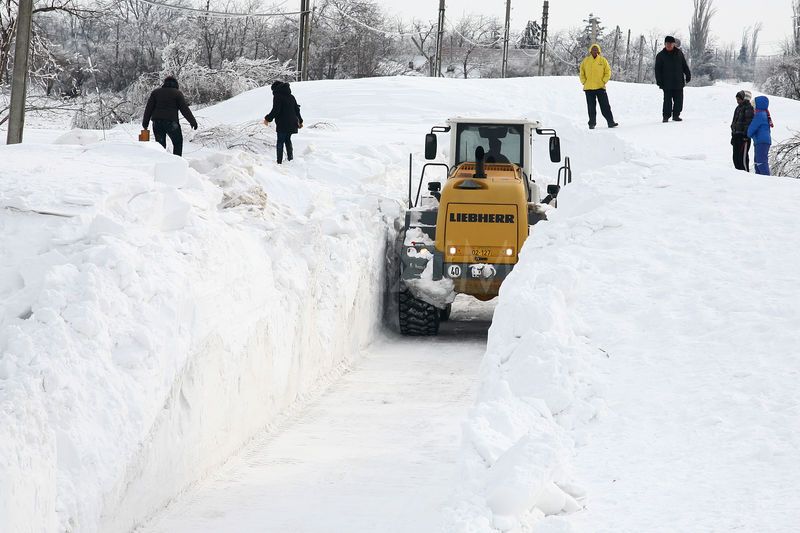Much of the United States is shivering through brutal cold as most of the rest of the world is feeling unusually warm weather. However strange it sounds, that contradiction fits snugly in explanations of what climate change is doing to Earth, scientists said.
In a map of global temperatures the last several days, big chunks of the world — the Arctic, Asia, parts of Africa, the Middle East and South America — show as dark red, signifying more than a dozen degrees Fahrenheit (7 degrees Celsius) warmer than the late 20th-century average. But the United States stands out like a cold thumb — a deep bluish-purple that is just as out of whack but on the frigid side.
Wind chills in parts of North Dakota reached minus 70 degrees (minus 56 degrees Celsius), while the heat index in Miami was more than 160 degrees warmer at 92 (33 degrees Celsius). The fourth-coldest NFL football game took place in Kansas City, while across the globe the thermometer hit a blistering 92 degrees, 12 degrees (6.8 degrees Celsius) warmer than average on Friday during tennis’ Australian Open in Melbourne. Warm temperature records fell overnight in Aruba, Curacao, parts of Argentina, Oman and Iran.
Where weather was warmer than usual, it was happening both in the southern hemisphere, which is in summer, and in the northern hemisphere, which is in winter. For example, Oman, in the north, had its warmest January night ever at 79.5 degrees (26.4 degrees Celsius). Argentina, in the south, had a record for warmest January night at 81.1 Fahrenheit (27.3 Celsius).
If it seems as if the world has gone topsy-turvy, in a way it has. Because this all comes from what’s happening in the Arctic, where it used to be warming twice as fast as the rest of the planet. Now, it’s warming three to four times faster.
“When the Arctic is off-the-charts warm (like now), we’re more likely to see frigid cold invade places like Texas that are ill-equipped to deal with it,” said Jennifer Francis, a Woodwell Research Center climate scientist and a pioneer in the theory of Arctic Amplification, which links the cold outbreaks to climate change. “Rapid Arctic warming is one of the clearest symptoms of human-caused climate change, making winter extremes more likely even as the globe warms overall.”
The way the cold is invading is through a weather phrase that is becoming increasingly familiar to Americans: The polar vortex. It’s a weather term that goes back to 1853 but has only been frequently used in the past decade or so.
That could be because the icy stabs are happening more often, said winter weather expert Judah Cohen of Atmospheric Environmental Research, a commercial firm outside of Boston.
The polar vortex is strong, icy weather that usually stays over the top of the planet, penned in by strong winds that whip around it, Cohen said.
AP







